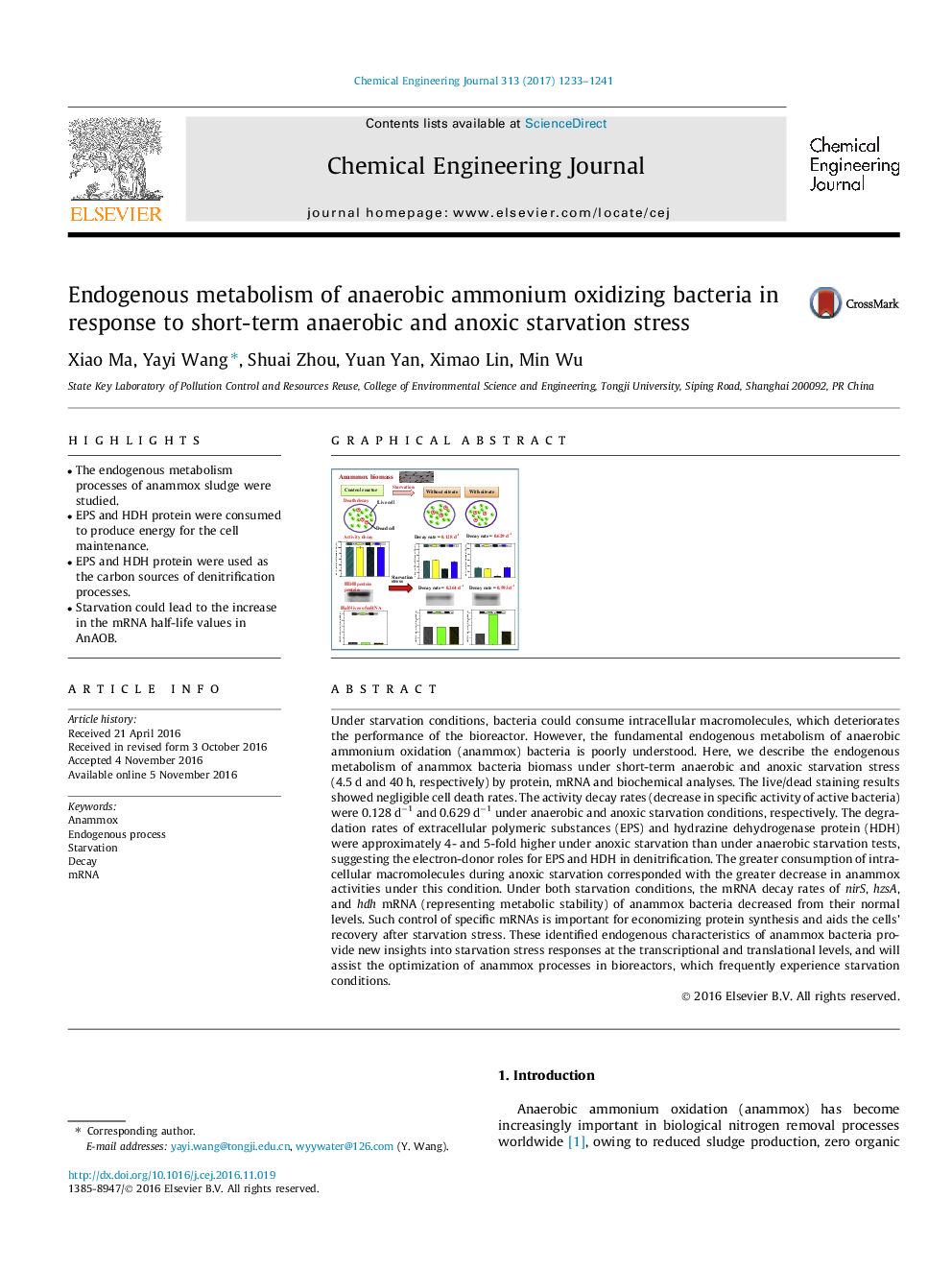| کد مقاله | کد نشریه | سال انتشار | مقاله انگلیسی | نسخه تمام متن |
|---|---|---|---|---|
| 6466690 | 1422965 | 2017 | 9 صفحه PDF | دانلود رایگان |
- The endogenous metabolism processes of anammox sludge were studied.
- EPS and HDH protein were consumed to produce energy for the cell maintenance.
- EPS and HDH protein were used as the carbon sources of denitrification processes.
- Starvation could lead to the increase in the mRNA half-life values in AnAOB.
Under starvation conditions, bacteria could consume intracellular macromolecules, which deteriorates the performance of the bioreactor. However, the fundamental endogenous metabolism of anaerobic ammonium oxidation (anammox) bacteria is poorly understood. Here, we describe the endogenous metabolism of anammox bacteria biomass under short-term anaerobic and anoxic starvation stress (4.5Â d and 40Â h, respectively) by protein, mRNA and biochemical analyses. The live/dead staining results showed negligible cell death rates. The activity decay rates (decrease in specific activity of active bacteria) were 0.128Â dâ1 and 0.629Â dâ1 under anaerobic and anoxic starvation conditions, respectively. The degradation rates of extracellular polymeric substances (EPS) and hydrazine dehydrogenase protein (HDH) were approximately 4- and 5-fold higher under anoxic starvation than under anaerobic starvation tests, suggesting the electron-donor roles for EPS and HDH in denitrification. The greater consumption of intracellular macromolecules during anoxic starvation corresponded with the greater decrease in anammox activities under this condition. Under both starvation conditions, the mRNA decay rates of nirS, hzsA, and hdh mRNA (representing metabolic stability) of anammox bacteria decreased from their normal levels. Such control of specific mRNAs is important for economizing protein synthesis and aids the cells' recovery after starvation stress. These identified endogenous characteristics of anammox bacteria provide new insights into starvation stress responses at the transcriptional and translational levels, and will assist the optimization of anammox processes in bioreactors, which frequently experience starvation conditions.
149
Journal: Chemical Engineering Journal - Volume 313, 1 April 2017, Pages 1233-1241
